The Australian muscle car scene marches to a different drummer than the United States. Lower sales volumes and import duties meant that local manufacturers utilized standard passenger car bodies married to the most powerful engine in their local armory. From this thinking was born the Holden Torana A9X. An evolution of the Torana SS and earlier L34, it emerged from the Holden factory, designed to homologate mechanical components expressly for racing. The limited production total and demise of the Australian manufacturing industry means these classics generate interest and eye-watering prices when they reach the market. This A9X has emerged from a private collection and is listed here at Lloyds Auctioneers and Valuers. It is currently part of an online auction, with the hammer set to fall on January 29th. Bidding sits presently at A$103,000 (US$69,700). If history is any indication, there will be plenty of bids that push the price to a stratospheric level before proceedings end.
Before we delve deeper into this Torana, it is worth reflecting upon what makes it rare. Holden produced 405 examples of the A9X to allow the homologation of a new rear axle and rear disc brakes to the cars raced during the Australian Touring Car Championship and, more importantly, the Bathurst 1000. Figures split between 305 sedans and 100 of the Hatchback variants the same as our feature car. What helps this car to stand out is the Body Number on the Tag. It isn’t numeric, reading “GMP&A.” The designation stands for General Motors Parts & Accessories. Although Head Office in Detroit placed a ban on motorsport sponsorship during that period, Holden executives found creative ways to circumvent the rules. One was to produce lighter and stronger bodyshells specifically designed for racing. Although technically standard production parts, these bodies were “walked” down the assembly line. Workers added additional welds to improve torsional rigidity, welded in captive nuts to mount roll cages, and deleted all unnecessary brackets and any sound-deadening material. There were rumors that the shells featured thinner and lighter steel components, but it is unclear whether this is fact or urban legend. The bodies received front and rear suspension, steering, and glass. Holden made these cars available to competitors at bargain basement prices, and thirty-three rolled off the line. Some performed their intended role, but others were transformed into road cars. This Torana is one such vehicle, making it a genuine 1-of-33 classic. Adding to its desirability, its original owner was Holden dealer Bill Paterson, who also owned a racing team. The car was earmarked to be built as a racer for the late great Peter Brock. However, Brock returned to the factory team after a few years as a privateer, and the Torana build never happened.
Every GMP&A body emerged from Holden’s factory wearing White paint. This was an economic measure because the company saw no value in using other shades on vehicles that would almost certainly eventually wear sponsor colors. The story differed with the production versions, which the company offered in several shades. This A9X wears the correct White with the hood blackout. The paint looks excellent, cloaking panels that are straight and rust-free. The trim and glass are spotless, and this Torana rolls on a set of Australian Simmons V5 three-piece wheels. Australian touring car rules that governed participation in the Bathurst 1000 allowed cars like the Torana to run wheels up to 10″ wide. However, this posed challenges since the rules also forbade changing suspension mounting points or wheels from sticking out beyond the bodywork. Holden’s answer was to fit cars like the A9X and its predecessor, the L34, with fiberglass fender flairs. They did the job perfectly, with the company adding front and rear spoilers for improved aerodynamic efficiency and braking cooling. Another significant change compared to the older L34 was the fitting of a reverse hood scoop. This featured a blanking plate for road cars to prevent water from drowning the engine. Racers removed the plate, so the carburetor inhaled plenty of clean, cold air to increase engine power. Those items are intact on this A9X and are in good order.
Mechanically, there was little to separate an A9X from a regular Torana SS. Both featured a 308ci V8 and a four-speed manual transmission. However, the A9X received a new rear end, replacing the fragile “banjo” differential with a more substantial unit. Increased racing speeds had compromised the Torana’s disc/drum brake system, so Holden added four-wheel disc brakes to address that shortcoming. In road trim, an A9X produced 236hp, sending it down the ¼ mile in 15.2 seconds and on to a top speed of 133mph. In racing trim, the 308 churned out more than 400hp, lifting the top speed to 165mph. This Torana’s engine bay houses a 308, although the drivetrain isn’t numbers-matching. That isn’t a drama, but an acceptable consequence of this gem starting life as a GMP&A shell. Remember, they were bodies on wheels, so they were never assigned an engine or transmission.
The quest for lightness was why Holden deleted the sound-deadening and excess brackets from the GMP&A bodies. The production versions continued that theme, with no radio or console. The carpet was lighter, with a sports gauge package, a factory tachometer, and a thick sports wheel, all integral parts of the package. This interior features Black vinyl trim that is in good order. The carpet continues that theme, as do the dash and pad. The owner added a column-mounted tachometer to better monitor the engine, but there are no other aftermarket components. If potential buyers craved air conditioning or power assistance for the windows or locks, they were out of luck. Those items added weight and were never offered on the A9X.
It can sometimes be challenging for foreign readers to understand why Australian enthusiasts are passionate about cars like this 1978 Torana A9X. The story is complicated, but it revolves around a story involving more than motorsport. Holden, a part of the General Motors empire, produced the country’s first genuinely locally engineered and developed model in 1948. By so doing, it cemented itself as “Australia’s Own.” Ford lagged behind by introducing a re-engineered version of the American Falcon in 1960. Between the two brands, they cornered more than 80% of new car sales in the early 1960s. However, with a population of less than 7½% of that in North America, there weren’t the potential sales volumes to justify developing a local Chevelle of Mustang. Import tariffs made large-capacity foreign engines too expensive. Those factors motivated manufacturers to adapt local production cars, married to local engines like the Holden 308ci V8, Ford’s 351ci Cleveland, and Chrysler’s 265ci “Hemi” six. Many of those cars competed fiercely on the track, proving the “win on Sunday, sell on Monday” adage accurate. The demise of the Australian car industry means the country will never see a modern A9X, and their limited production numbers mean they are highly coveted. Therefore, I won’t be surprised if the hammer falls on this Torana with the bidding beyond A$250,000.






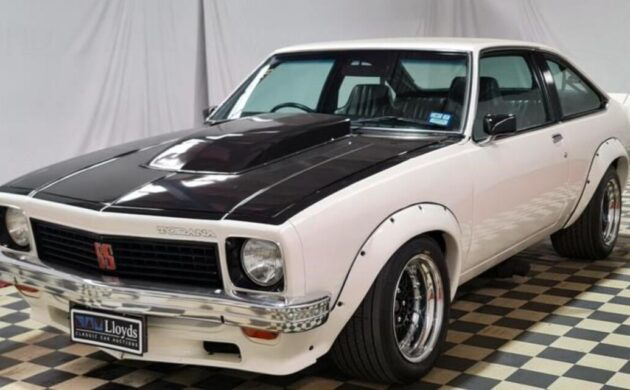
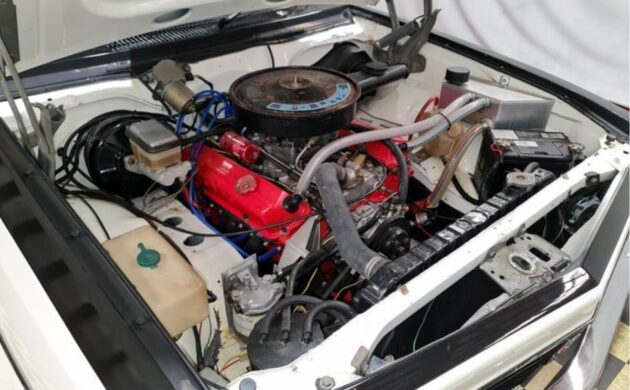
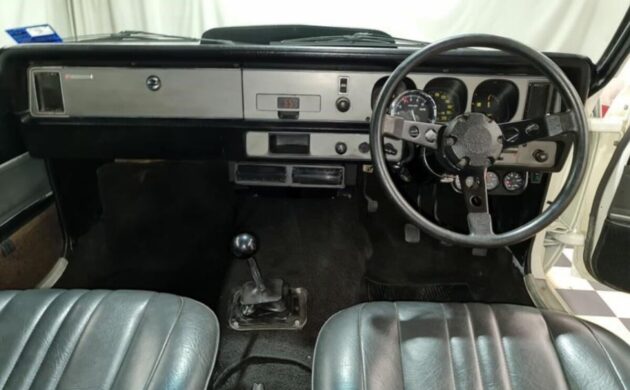

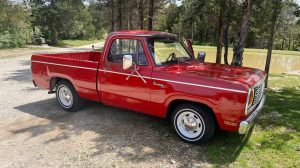
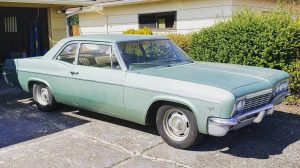




Adam never responds to MY comments, I hope I didn’t pixx him off too, but anytime a car like this shows up, it’s clear who submitted it. I happen to have grown up in Milwaukee, Wisconsin, and Australia, for all we knew, just got electricity last year. We never, EVER, heard of their motorsports. Kind of a “commie” action on our part. To our surprise, they had some wicked cars, and this is no exception. Kind of an Opel 1900 on heroin. It’s an awesome car, and who knew?
I believe “crack” would be a better analogy…not sure I’d want a car that was “on heroin”.
The longest fence in the world (over 3k miles) is in Australia.
The dingo fence
The Dog Fence, aka The Dingo Fence runs for 3,488 miles across South Australia and Queensland, at times running along the New South Wales border. It was originally intended a a Rabbit Fence, but was ineffective at that task. I have seen it in about four different places.
A Rabbit Proof Fence was built Western Australia. It has three sections, all joined, and totals 2,023 miles. Although I have driven in areas “protected” by these fences, I haven’t any part of it (perhaps I didn’t recognise it as such!
A smaller Rabbit Fence in Queensland is 330 miles long.
I recall reading that somewhere else……
What a cool car! Looks like a Vega with a Hornet back end.
Thank you for bringing us the stories of cars from all around the world – like this Holden. I remember catching Australian racing series back in the days of Speedvision. Cars in those races, and in the background of various movies made in Australia, built my curiosity in the automobile market there. The Ford vs GM rivalry seems pretty familiar, it’s fascinating to learn how the cars competing were far from badge-engineered versions of US or European market cars. Holden’s creativity working past GM rules to bring the featured car to life is very cool. it gives this car quite a sense of soul. I hope it’s won by a proud Aussie.
Also — How cool does this Holden look with the chrome bumper reflecting that checkerboard floor? It really draws my eye.
Australian cars way overpriced compared to their American peers.
These cars are awesome, I would love one. All of the big three’s Aussie muscle car offerings were wicked.
I worked in the motor industry back in the 70s and 80s we sold and raced these cars GTHO Falcons 327 and 350 Monaro’s V8 Toranas Chargers i’m glad i got to drive these beast could not afford them now.
Bought my first V8 Torana at 16 a few months before I got my licence back in 1990 for $3150 and was told I paid too much for it ! Had 7 or 8 of em over the years but alas they are just insanely expensive nowadays. (Like everything else in Australia) oh well….Long live Peter Brock
JHGDMFC that car is bada**. The thing that I love about most Australian and European cars is that they were built to handle as well as go fast. This one would look great in my garage or hammering it on some local upstate NY twisty roads. Since it technically came with a VIN, would it be possible to register it for the road? The folks from down under built some seriously awesome cars back in the day.
Those Toranas were road cars, as were all competitors in the Bathurst race and its predecessor. They were based on family hacks, as was the Falcon GT, Monaro, Valiant Charger. Their more mundane siblings often entered in other classes within the same race.
You would probably recognise the Studebakers that were entered by Needham Motors. They usually made a good account of themselves. I think a second (1960?) was the best that they did, as well as a class win – memory only, haven’t checked.
That’s awesome. I love watching the Bathurst 1000 when it’s broadcast in America, the racing is the definition of “door to door”. The V-8 supercars are my favorite class, I love the fact that they’re highly modified family cars. Wish I was a bazillion heir so I could buy this one and drive it like it was meant to be driven. Sure would get some attention at a car show! A 308ci engine making over 400hp probably sounds extremely pi***d off!